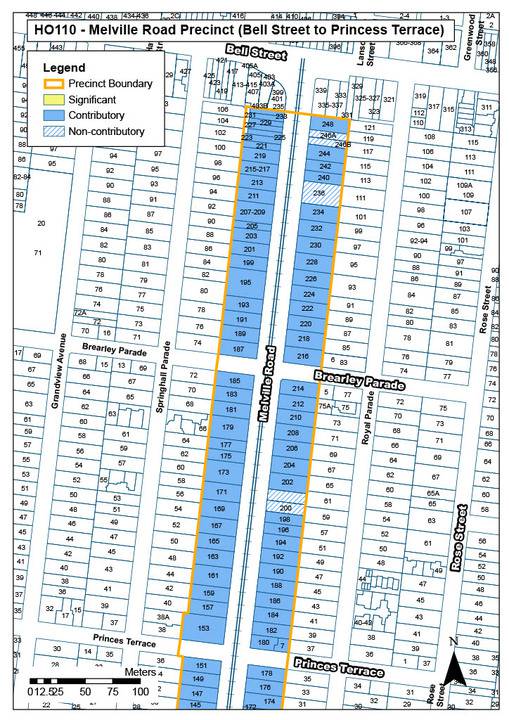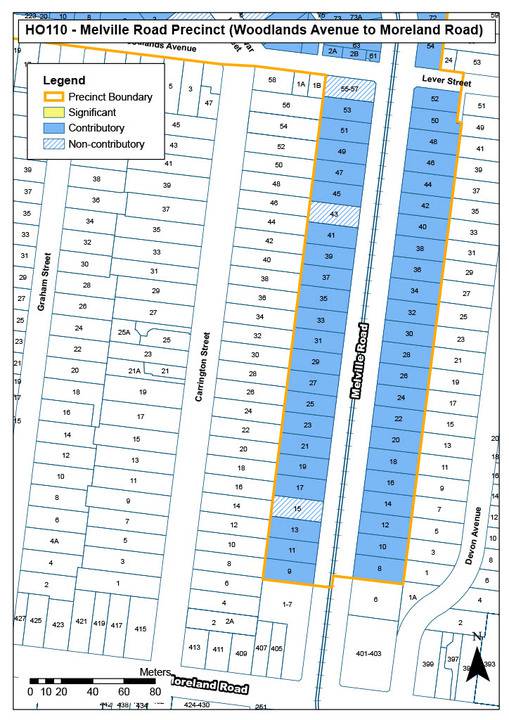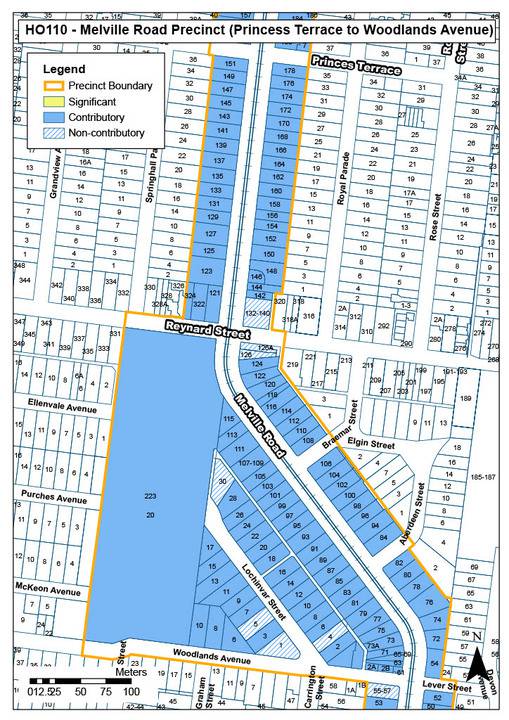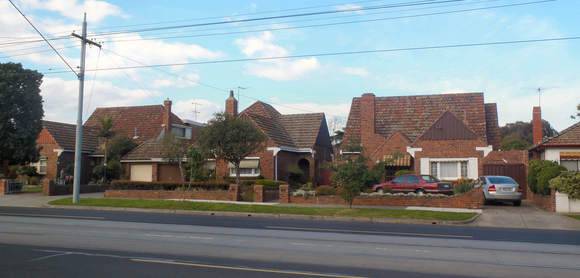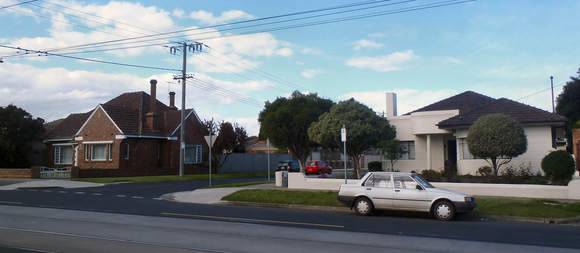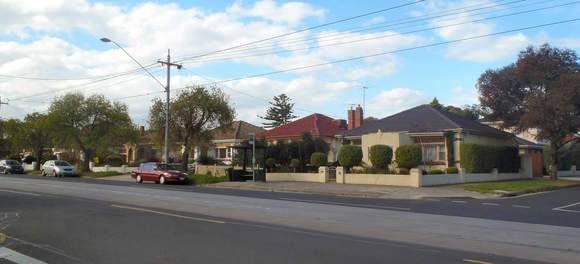| Back to search results » | Back to search page » |
|
Melville Road
Location9-233 & 8-248 MELVILLE ROAD, and 1-17 & 2-30 LOCHINVAR STREET, and 2-10 WOODLANDS AVENUE, PASCOE VALE SOUTH, MORELAND CITY
File Number3525LevelIncl in HO area contributory |
|
Statement of Significance
What is significant?
The Melville Road Precinct, comprising houses and buildings at 1-17 and 2-30 Lochinvar Street, 9-233 and 8-248 Melville Road, 2-10 Woodlands Avenue, 54 Lever Street and the Shore Reserve, is significant. Buildings and features that contribute to the significance of the precinct are:
- The houses, associated outbuildings, garages and front fences dating from the inter-War and immediate post-war eras (c.1920 to c.1955).
- The inter-War shops at 61-73A, 219, & 223-233 Melville Road.
- The former Bakery at 146 Melville Road.
- The northern section of the Shore Reserve containing the mature exotic trees, lava rock walls, and early substation.
Non Contributory properties include are:
- Lochinvar Street: 1, 4, 5 and 30.
- Melville Road: 10, 15, 43, 55, 126, 126A, 132-140, 200, 221, 236, 246A and 246B.
How is it significant?
The Melville Road Precinct is of local architectural and historical significance to the City of Merri-bek.
Why is it significant?
The Melville Road Precinct is of local architectural significance as a representative precinct of the type of Inter-War and immediate Post-War housing that is typical of the western part of Coburg. The precinct is a particularly homogenous and intact group of the type, which is expressed by a limited palette of elements and materials. In addition, similar scale and setbacks within the area add to the precinct's homogeny. Inter-War housing styles within the precinct include English Domestic Revival (with good examples at 190-198 Melville Road), Spanish Mission (with good examples at 101 and 120 Melville Road) and Bungalows (for example 104 Melville Road). There are a small number of Post-War brick houses, including the cream brick house with steel windows at 127 Melville Road.
The Melville Road Precinct is of local historical significance for its capacity to demonstrate the rapid suburban development of this part of Coburg after the Great Depression, which is reflected in the homogeneity of the precinct. The groups of shops demonstrate how small retail centres developed along transport routes to serve the local needs of residents. (Criteria A & D)
The former West Coburg Gardens and Recreation Reserve (now the Shore Reserve) is representative of the parks and gardens established by the City of Coburg during the interwar period at a time of rapid growth. The informal layout of the northern section of the reserve is typical of interwar parks of the period and contributes to the historic character of the precinct. (Criteria D & E)
Group
Residential buildings (private)
Category
Residential Precinct


